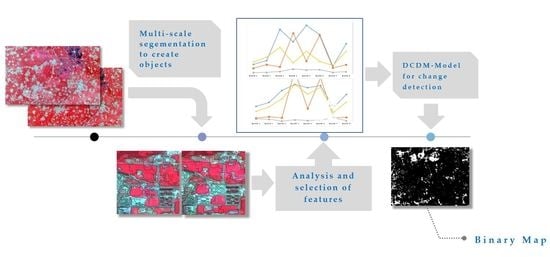Application Study on Double-Constrained Change Detection for Land Use/Land Cover Based on GF-6 WFV Imageries
Abstract
1. Introduction
2. Materials and Methods
2.1. Analysis of Band Spectral Characteristics
2.2. Feature Analysis and Optimization of LULC
2.3. Double-Constrained Change Detection
2.4. Accuracy Assessment
3. Study Area and Data
4. Results
4.1. Feature Analysis and Optimization
4.2. The Accuracy of LULC Change Detection Results
4.3. Comparison Results of GF-1WFV Images
5. Discussion
6. Conclusions
Author Contributions
Funding
Acknowledgments
Conflicts of Interest
References
- Liu, L.W.; Lin, J.; Chen, M.; Zhang, Y.; Feng, H.; Ye, Z.; Chu, J. Progress Review on Land Science Research in 2018 and Prospects for 2019: The Sub-report of Land Resources. Land Use Plan. 2019, 33, 106–114. [Google Scholar]
- Ze, Y.W.; Hua, X.J.; Hua, X.L. An analysis on eco-environmental effect of urban land use based on remote sensing images: A case study of urban thermal environment and NDVI. Acta Ecol. Sin. 2006, 26, 1450–1460. [Google Scholar]
- Teng, S.P.; Chen, Y.K.; Cheng, K.S.; Lo, H.C. Hypothesis-test-based landuse/cover change detection using multi-temporal satellite images—A comparative study. Adv. Space Res. 2008, 41, 1744–1754. [Google Scholar] [CrossRef]
- Zhou, Q.M. Review on Change Detection Using Multi-temporal Remotely Sensed Imagery. Geomat. World 2011, 9, 28–33. [Google Scholar]
- He, X. The development of direct change detection methods for remote sensing images. Sci. Technol. Inf. 2010, 13, 29. [Google Scholar]
- Yu, X.F.; Luo, Y.Y.; Zhuang, D.F.; Wang, S.K.; Wang, Y. Comparative analysis of land cover change detection in an Inner Mongolia grassland area. Acta Ecol. Sin. 2014, 34, 7192–7201. [Google Scholar]
- Bruzzone, L.; Prieto, D.F. An adaptive semiparametric and context-based approach to unsupervised change detection in multitemporal remote-sensing images. IEEE Trans. Image Process. A Publ. IEEE Signal Process. Soc. 2002, 11, 452–466. [Google Scholar] [CrossRef] [PubMed]
- Bruzzone, L.; Marchesi, S.; Bovolo, F. Change Detection in VHR Multispectral Images: Estimation and Reduction of Registration Noise Effects. In Optical Remote Sensing; Springer: Berlin/Heidelberg, Germany, 2011. [Google Scholar]
- Singh, A. Digital change detection techniques using remotely sensed data. Int. J. Remote Sens. 1988, 10, 989–1003. [Google Scholar] [CrossRef]
- Lorena, R.; dos Santos, J.R.; Shimabukuro, Y.E.; Brown, F. A change vector analysis technique to monitor land use/land use/cover in sw Brazilian amazon: Acre state. In Proceedings of the Mid-Term Symposium in Conjunction with Pecora 15/Land Satellite Information IV Conference, Denver, CO, USA, 10–15 November 2002. [Google Scholar]
- Bovolo, F.; Marin, C.; Bruzzone, L. A multilevel approach to change detection for port surveillance with very high resolution SAR images. In Proceedings of the 6th International Workshop on the Analysis of Multi-temporal Remote Sensing Images (Multi-Temp), IEEE, Trento, Italy, 12–14 July 2011. [Google Scholar]
- Zhao, M.; Zhao, Y. Object-oriented and multi-feature hierarchical change detection based on CVA for high-resolution remote sensing imagery. J. Remote Sens. 2018, 22, 123–135. [Google Scholar]
- Yang, C.; Hu, J. Test and Analysis on Application of Change Detection Method for Multitemporal Remote Sensing Images. Geomat. Spat. Inf. Technol. 2015, 3, 54–56. [Google Scholar]
- Wei, H.; Hu, J.L.; Wang, L.H.; Hu, Y.X.; Han, P. Remote sensing image change detection based on change vector analysis of PCA component. Remote Sens. Land Resour. 2016, 28, 22–27. [Google Scholar]
- Wang, L.; Yan, W.; Yu, Q. Research on Land Use Change Detection Based on an Object-oriented Change Vector Analysis Method. J. Geo-Inf. Sci. 2014, 27, 74–80. [Google Scholar]
- Han, S.; Li, H.; Gu, H. The Study on Land Use Change Detection Based on Object-oriented Analysis. Remote Sens. Inf. 2009, 3, 23–29. [Google Scholar]
- Wang, Z.; Liu, Y.; Ren, Y.; Ma, H. Object-Level Double Constrained Method for Land use/cover Change Detection. Sensors 2019, 19, 79. [Google Scholar] [CrossRef] [PubMed]
- Li, X.; Shu, N.; Yang, J.; Li, L. The land-use change detection method using object-based feature consistency analysis. In Proceedings of the 19th International Conference on Geoinformatics, Shanghai, China, 24–26 June 2011. [Google Scholar]
- Zhang, Z.; Zhang, X.; Xin, Q.; Yang, X. Combining the Pixel-based and Object-based Methods for Building Change Detection Using High-resolution Remote Sensing Images. Acta Geod. Cartogr. Sin. 2018, 47, 102. [Google Scholar]
- Li, C.; Liang, W. Forest change detection using remote sensing image based on object-oriented change vector analysis. Remote Sens. Land Resour. 2017, 29, 77–84. [Google Scholar]
- Ma, J.; Pei, L. Study of Urban Expansion Change Monitoring Based on GF-1. Geomat. Spat. Inf. Technol. 2017, 40, 61–64. [Google Scholar]
- Zhang, C.; Yang, C.; Jia, M.; Jia, T. Change Detection of Land Use in Wuhan City Based on Multi Temporal Band Combination of GF-1. Geomat. Spat. Inf. Technol. 2016, 39, 33–35. [Google Scholar]
- Liu, J.Y.; Xin, C.; Wu, H.; Zeng, Q.; Shi, J. Potential Application of GF-6 WFV Data in Forest Types Monitoring. Spacecr. Recovery Remote Sens. 2019, 40, 111–120. [Google Scholar]
- Zhao, Y. Principle and Method of Remote Sensing Application Analysis; The Science Publishing Company: Beijing, China, 2003. [Google Scholar]
- Li, L.; Shu, N.W.; Kai, G.; Yan, C.E. Detection Method for Remote Sensing Images Based on Multi-features Fusion. Acta Geod. Cartogr. Sin. 2014, 43, 945–953. [Google Scholar]
- Wang, S.; Yang, X.; Dong, Z.; Shi, C. Remote Sensing Image Change Detection Based on Relief-PCA Feature Selection. J. Graphics 2019, 40, 119–125. [Google Scholar]
- Liu, J.F.; Zhao, W.; Zhu, H.; Jin, Y. Pattern Recognition; Harbin Institute of Technology Press: Harbin, China, 2014. [Google Scholar]
- Zhang, Y. The sample size is not “the more the merrier”-on the scientific determination of sample size in sampling survey. Chin. Stat. 2008, 5, 46–48. [Google Scholar]
- Xi, J. Secure a Decisive Victory in Building a Moderately Prosperous Society in All Respects and Strive for the Great Success of Socialism with Chinese Characteristics for a New Era. In Proceedings of the 19th National Congress of the Communist Party of China, Beijing, China, 18 October 2017. [Google Scholar]
- Qiu, C.H. Gaofen 6 lifts off: The national “Sky Eye” project data system is basically formed. Public Commun. Sci. Technol. 2018, 10. Available online: https://xueshu.baidu.com/usercenter/paper/show?paperid=7878de1d46af59d15d227fcbb4ddf8cb&site=xueshu_se (accessed on 28 July 2020).
- Tan, Q.; Liu, Z.; Shen, W. An Algorithm for Object-Oriented Multi-Scale Remote Sensing Image Segmentation. J. Beijing Jiaotong Univ. 2007, 31, 111–114. [Google Scholar]
- Schiewe, J. Segmentation of high-resolution remotely sensed data-concepts, applications and problems, Symposium on Geospatial Theory. In Proceedings of the Processing and Applications, Ottawa, IL, Canada, 9–12 July 2002. [Google Scholar]
- Dian, Y.Y.; Fang, S.H.; Yao, C.H. Change detection for high-resolution images using multilevel segment method. J. Remote Sens. 2016, 20, 129–137. [Google Scholar]
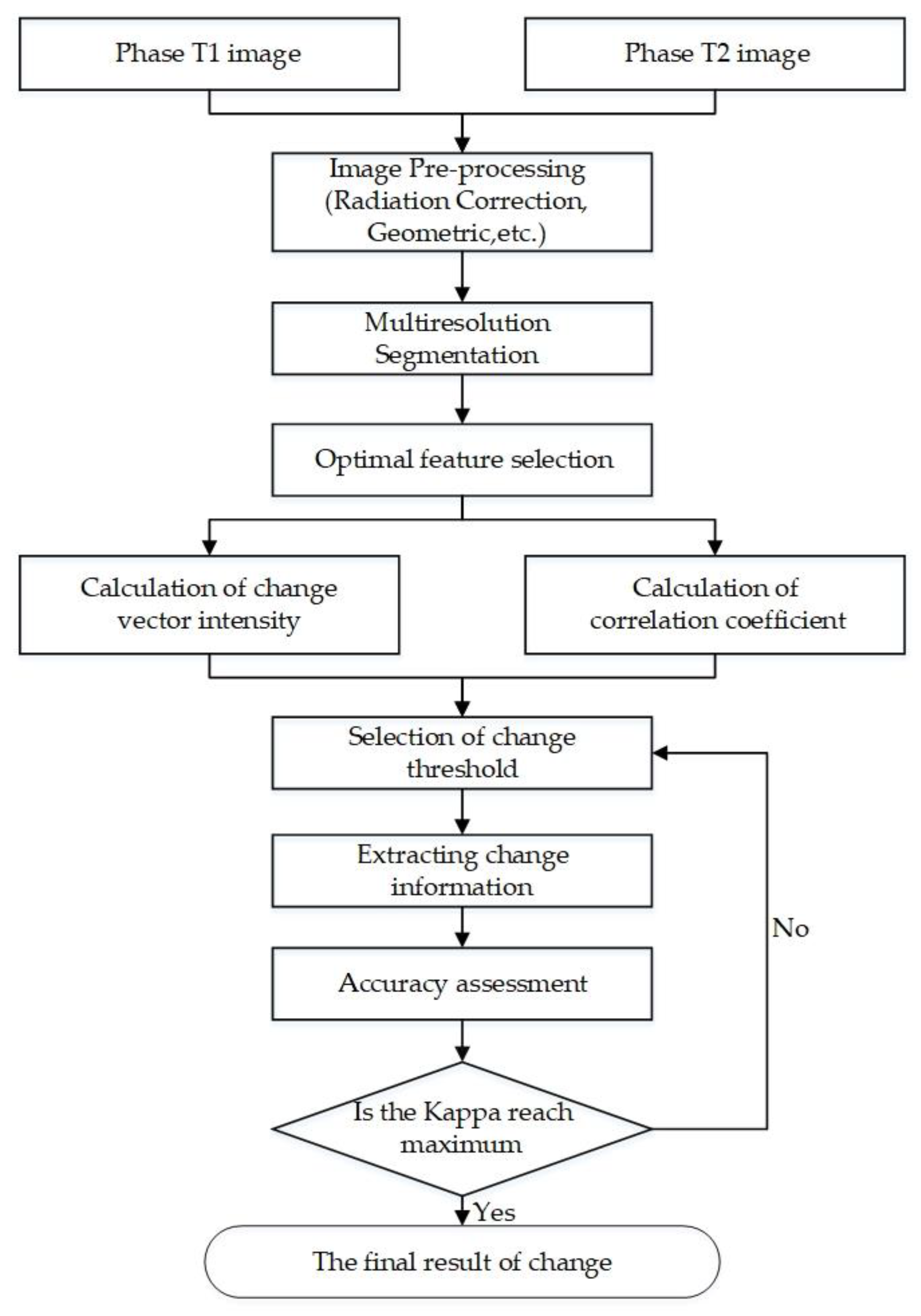
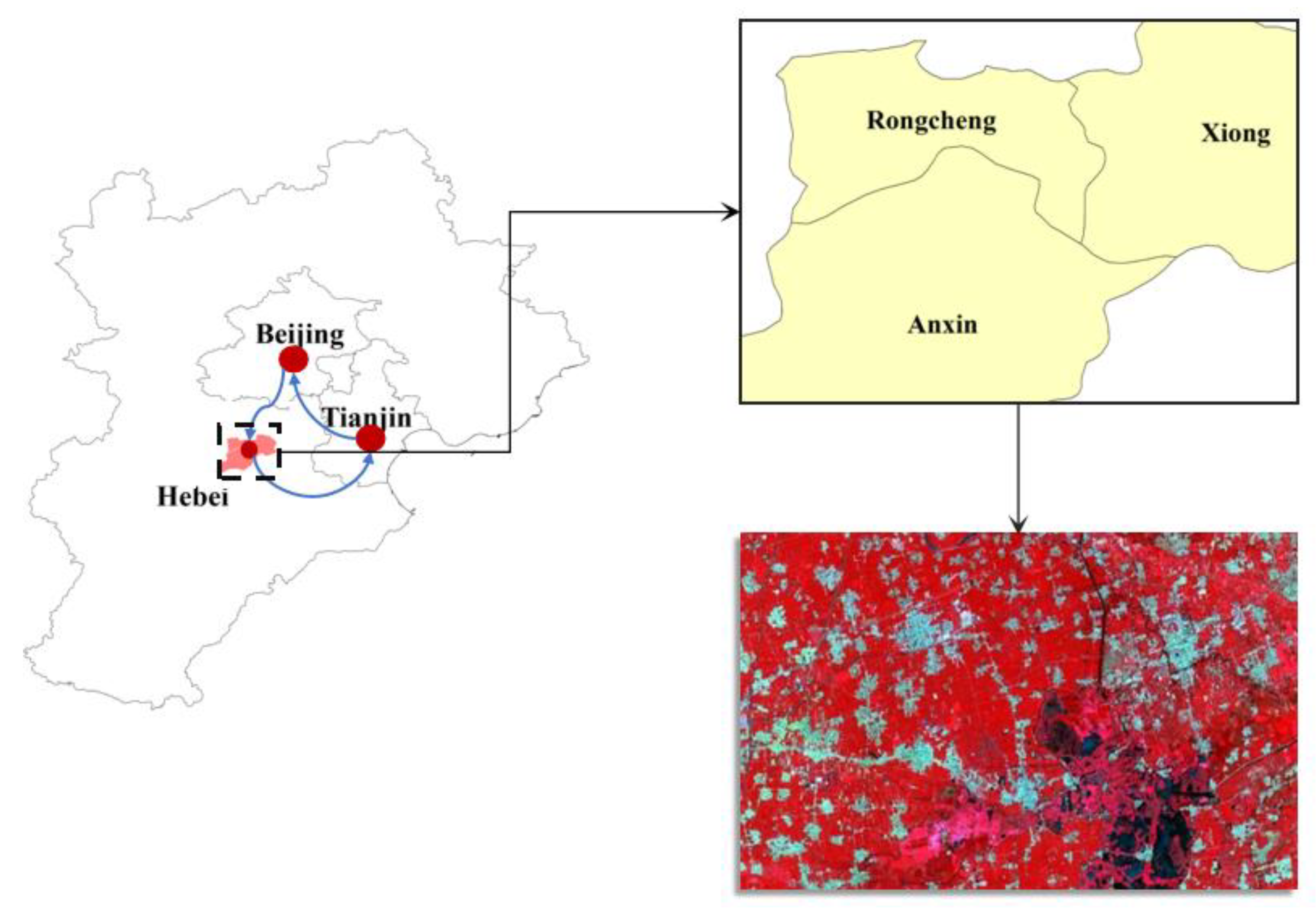
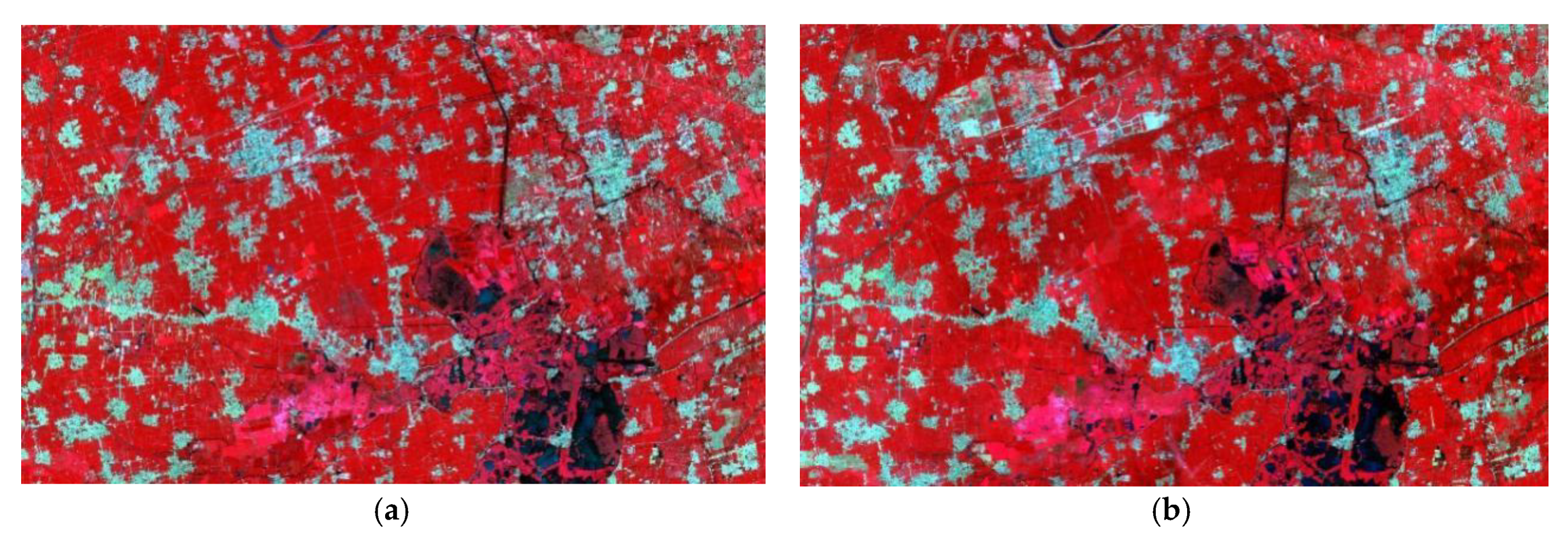
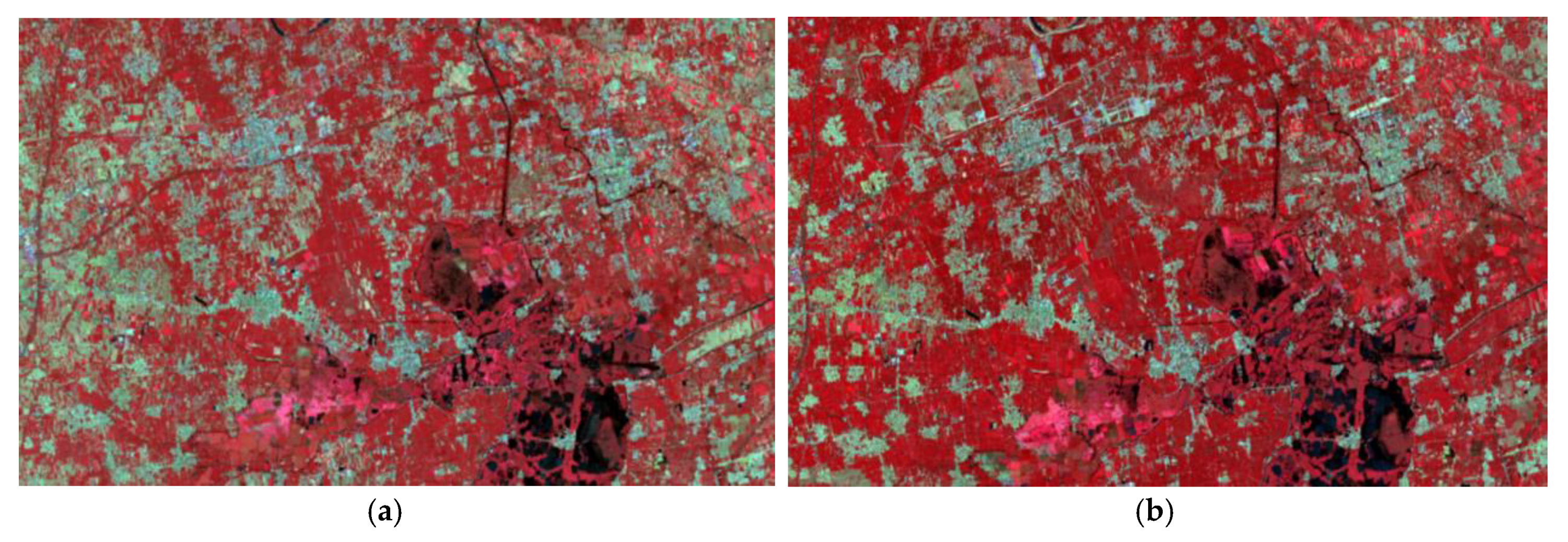

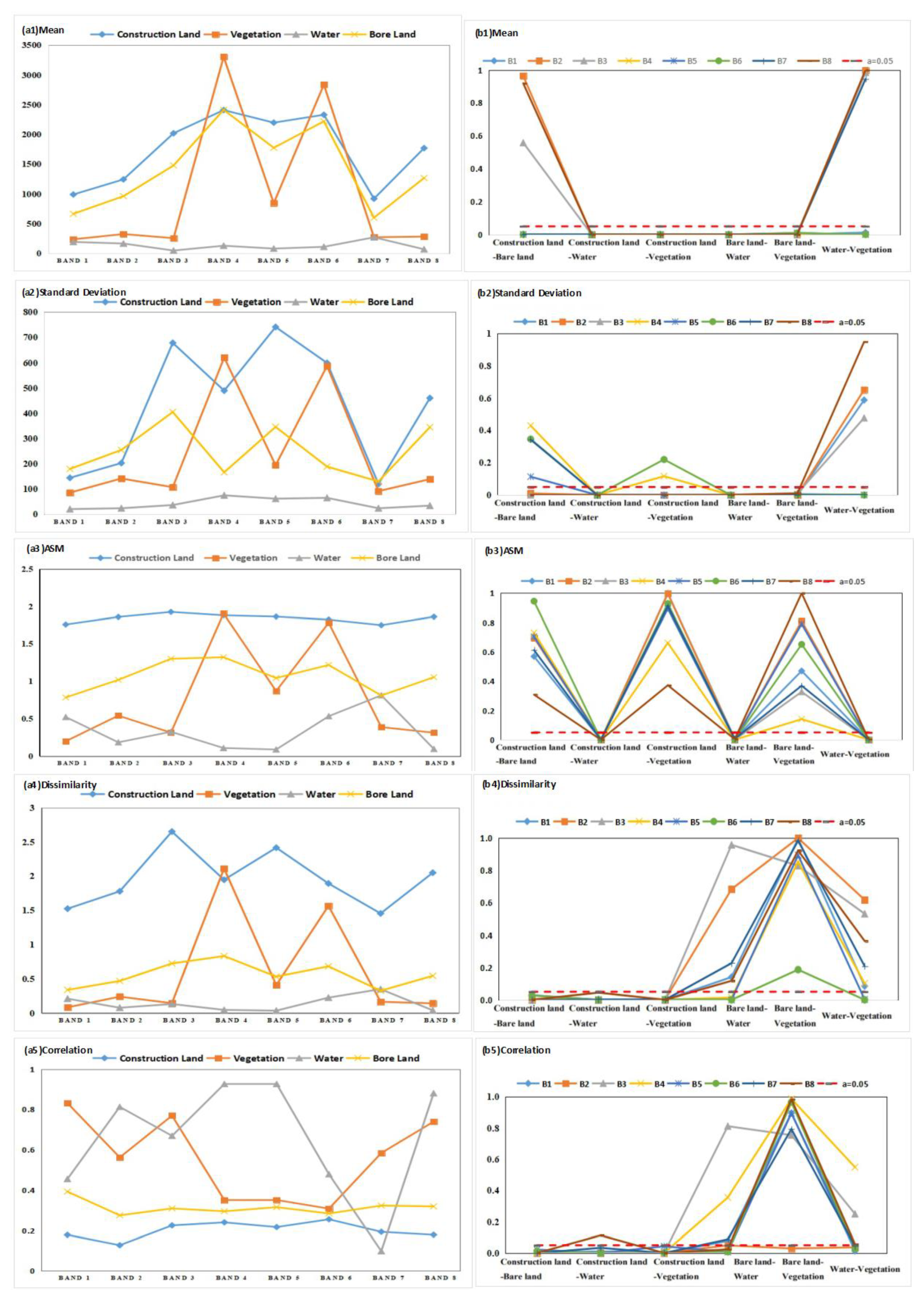
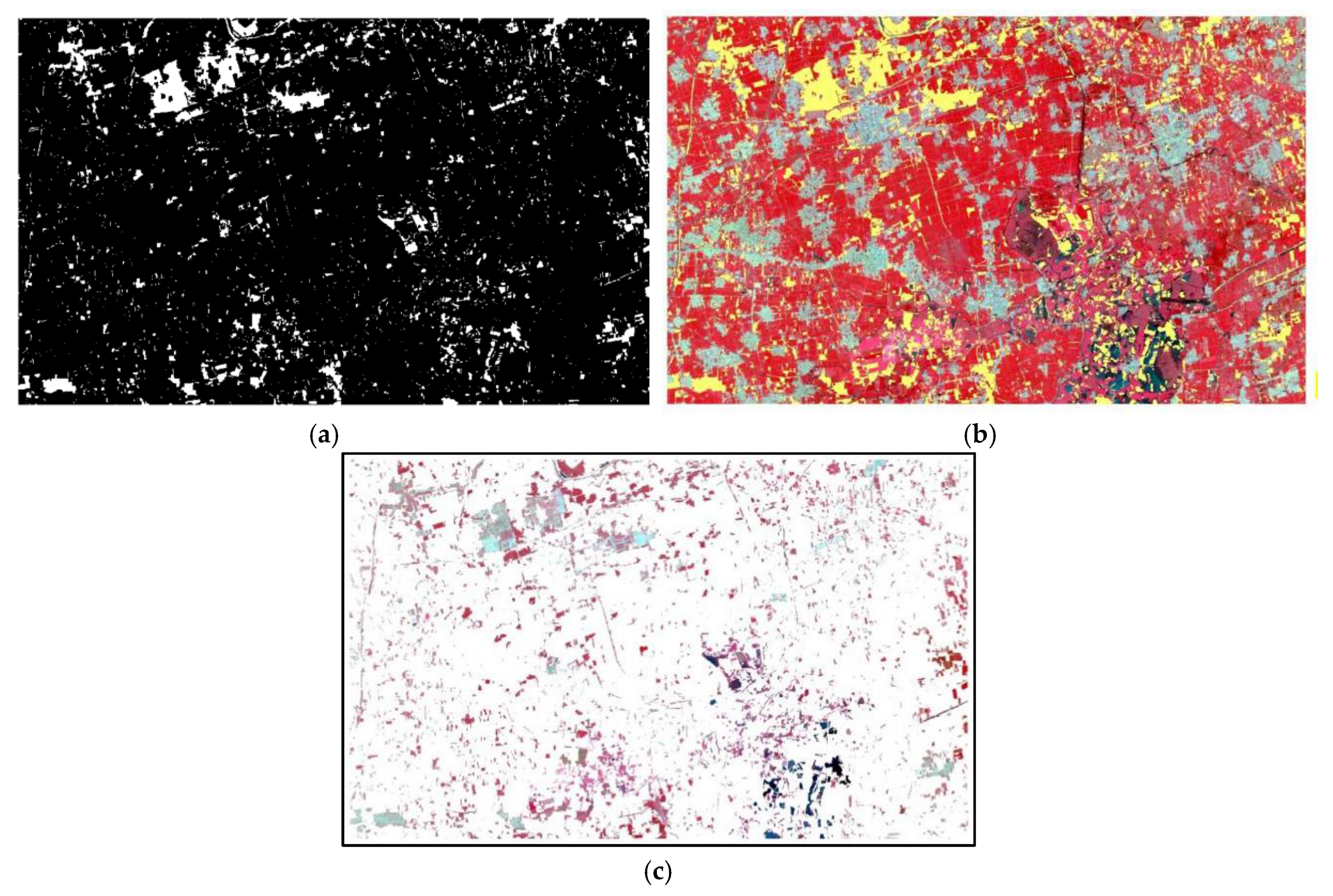
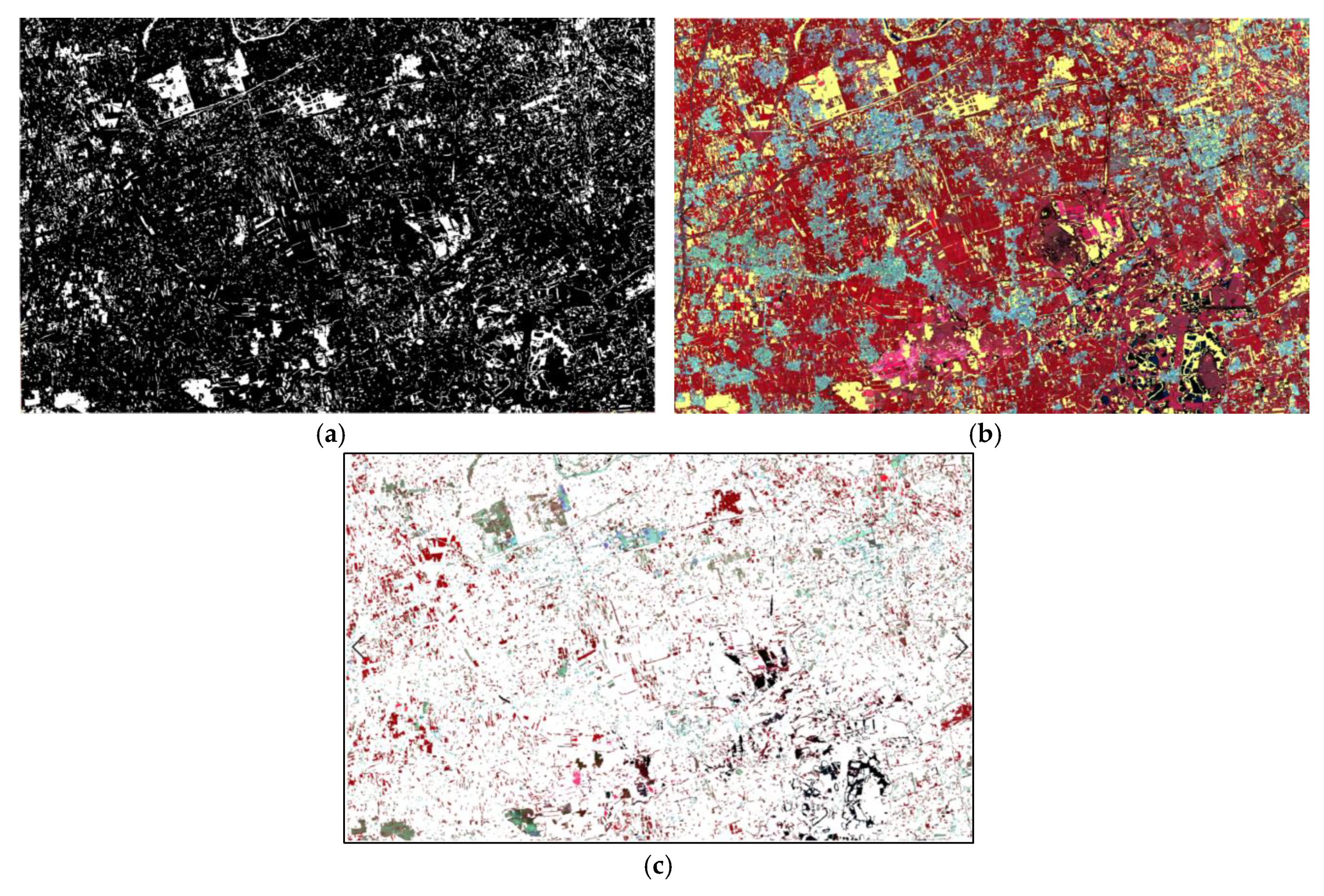
| Evaluation Data | Unchanged | Changed | Total | |
|---|---|---|---|---|
| Detection Result | ||||
| Unchanged | Nnn | Ncn | Ntn | |
| Changed | Nnc | Ncc | Ntc | |
| Total | Nnt | Nct | N | |
| Parameters | Cameras | ||||
|---|---|---|---|---|---|
| Spectrum (μm) | panchromatic | 0.45–0.90 | |||
| multi-spectral | B1 (blue) | 0.45−0.52 | B7 (purple) | 0.40–0.45 | |
| B1 (blue) | 0.45–0.52 | ||||
| B2 (green) | 0.52–0.59 | B2 (green) | 0.52–0.59 | ||
| B8 (yellow) | 0.59–0.63 | ||||
| B3 (red) | 0.63–0.69 | B3 (red) | 0.63–0.69 | ||
| B5 (red-edge1) | 0.69–0.73 | ||||
| B4 (near-infrared) | 0.77–0.89 | B6 (red-edge2) | 0.73–0.77 | ||
| B4 (near-infrared) | 0.77–0.79 | ||||
| Spatial resolution (m) | panchromatic | 2 | 16 | ||
| multi-spectral | 8 | ||||
| Width (km) | 90 | 800 | |||
| Min | Max | Mean | StdDev | |
|---|---|---|---|---|
| Blue (1) | 729 | 3722 | 944.12 | 174.37 |
| Green (2) | 700 | 4094 | 1042.05 | 243.08 |
| Red (3) | 471 | 4094 | 820.12 | 303.88 |
| NIR (4) | 665 | 4095 | 2778.33 | 536.60 |
| RE1 (5) | 330 | 4088 | 701.96 | 180.05 |
| RE2 (6) | 381 | 4081 | 1448.52 | 264.46 |
| Purple (7) | 612 | 3064 | 713.01 | 77.99 |
| Yellow (8) | 437 | 4094 | 698.25 | 207.76 |
| B1 | B2 | B3 | B4 | B5 | B6 | B7 | B8 | |
|---|---|---|---|---|---|---|---|---|
| Mean | ||||||||
| F | 83.7 | 65.57 | 92.28 | 174.34 | 67.43 | 150.93 | 53.98 | 83.26 |
| p | 6.64 × 10−20 | 1.11 × 10−17 | 8.04 × 10−21 | 4.08 × 10−27 | 3.18 × 10−22 | 1.20 × 10−25 | 6.22 × 10−22 | 7.44 × 10−20 |
| Standard Deviation | ||||||||
| F | 46.95 | 47.45 | 31.25 | 27.21 | 37.15 | 27.12 | 20.81 | 25.44 |
| p | 1.48 × 10−16 | 1.16 × 10−16 | 8.20 × 10−13 | 1.13 × 10−11 | 3.14 × 10−9 | 1.20 × 10−11 | 5.99 × 10−13 | 3.78 × 10−11 |
| Angular Second Moment (ASM) | ||||||||
| F | 10.25 | 17.58 | 15.87 | 17.69 | 15.33 | 16.62 | 11.64 | 10.17 |
| p | 1.76 × 10−5 | 3.64 × 10−8 | 1.38 × 10−7 | 3.35 × 10−8 | 5.83 × 10−8 | 7.62 × 10−8 | 2.19 × 10−6 | 1.91 × 10−5 |
| Dissimilarity | ||||||||
| F | 16.81 | 14.83 | 16.38 | 15.19 | 21.59 | 24.74 | 9.76 | 9.81 |
| p | 6.58 × 10−8 | 3.19 × 10−7 | 9.24 × 10−8 | 2.39 × 10−7 | 2.11 × 10−9 | 2.54 × 10−10 | 4.29 × 10−8 | 2.65 × 10−5 |
| Correlation | ||||||||
| F | 16.68 | 13.24 | 15.69 | 11.83 | 15.12 | 14.29 | 10.68 | 12.00 |
| p | 7.27 × 10−8 | 1.21 × 10−6 | 1.59 × 10−7 | 4.15 × 10−6 | 7.38 × 10−8 | 5.00 × 10−7 | 3.13 × 10−8 | 3.56 × 10−6 |
| Evaluation Index | Unchanged | Changed | Total | |
|---|---|---|---|---|
| Detection Results | ||||
| Unchanged | 119 | 19 | 138 | |
| Changed | 14 | 148 | 162 | |
| Total | 133 | 167 | 300 | |
| Class | Vegetation-Bare Land | Vegetation- Construction Land | Vegetation- Water | Bare Land- Water | Bare Land- Construction-on Land | Water- Construction Land |
|---|---|---|---|---|---|---|
| Number of samples | 14 | 4 | 2 | 1 | 11 | 1 |
| percentage | 42.4% | 12.1% | 6.1% | 3.0% | 33.3% | 3.0% |
| Evaluation Index | Overall Accuracy | Kappa | Commission Errors | Omission Errors | |
|---|---|---|---|---|---|
| Data Type | |||||
| GF-1 WFV | 87% | 0.7351 | 13.21% | 9.58% | |
| GF-6 WFV | 89% | 0.7760 | 8.64% | 11.38% | |
© 2020 by the authors. Licensee MDPI, Basel, Switzerland. This article is an open access article distributed under the terms and conditions of the Creative Commons Attribution (CC BY) license (http://creativecommons.org/licenses/by/4.0/).
Share and Cite
Yu, J.; Liu, Y.; Ren, Y.; Ma, H.; Wang, D.; Jing, Y.; Yu, L. Application Study on Double-Constrained Change Detection for Land Use/Land Cover Based on GF-6 WFV Imageries. Remote Sens. 2020, 12, 2943. https://doi.org/10.3390/rs12182943
Yu J, Liu Y, Ren Y, Ma H, Wang D, Jing Y, Yu L. Application Study on Double-Constrained Change Detection for Land Use/Land Cover Based on GF-6 WFV Imageries. Remote Sensing. 2020; 12(18):2943. https://doi.org/10.3390/rs12182943
Chicago/Turabian StyleYu, Jingxian, Yalan Liu, Yuhuan Ren, Haojie Ma, Dacheng Wang, Yafei Jing, and Linjun Yu. 2020. "Application Study on Double-Constrained Change Detection for Land Use/Land Cover Based on GF-6 WFV Imageries" Remote Sensing 12, no. 18: 2943. https://doi.org/10.3390/rs12182943
APA StyleYu, J., Liu, Y., Ren, Y., Ma, H., Wang, D., Jing, Y., & Yu, L. (2020). Application Study on Double-Constrained Change Detection for Land Use/Land Cover Based on GF-6 WFV Imageries. Remote Sensing, 12(18), 2943. https://doi.org/10.3390/rs12182943




